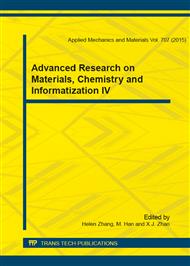p.309
p.313
p.317
p.321
p.325
p.329
p.333
p.338
p.343
No-Load Grid Connection Control Strategy of Double-Fed Induction Generator in Wind Power Generation System
Abstract:
A control strategy and implement method for the no-load cutting-in of double-fed induction generator in power system are introduced. The paper analyze the basal principle of DFIG under no-load condition, and build the correspondent mathematical model. Then according to the model, the paper propose a control strategy on the basis of magnetic flux linkage vector orientation control. Using simulation software set up a simulation model. The result of simulation showed that: the no-load grid connection control strategy can effectively keep the stator voltage track the time-varing grid voltage. At the interconnection instant, the impulse current is almost zero, thus the soft cutting-in of DFIG is well realized.
Info:
Periodical:
Pages:
325-328
Citation:
Online since:
December 2014
Authors:
Keywords:
Price:
Сopyright:
© 2015 Trans Tech Publications Ltd. All Rights Reserved
Share:
Citation:


